Upload Files to Amazon S3 Using Javascript
How to Upload Files to Amazon S3 using Node.js
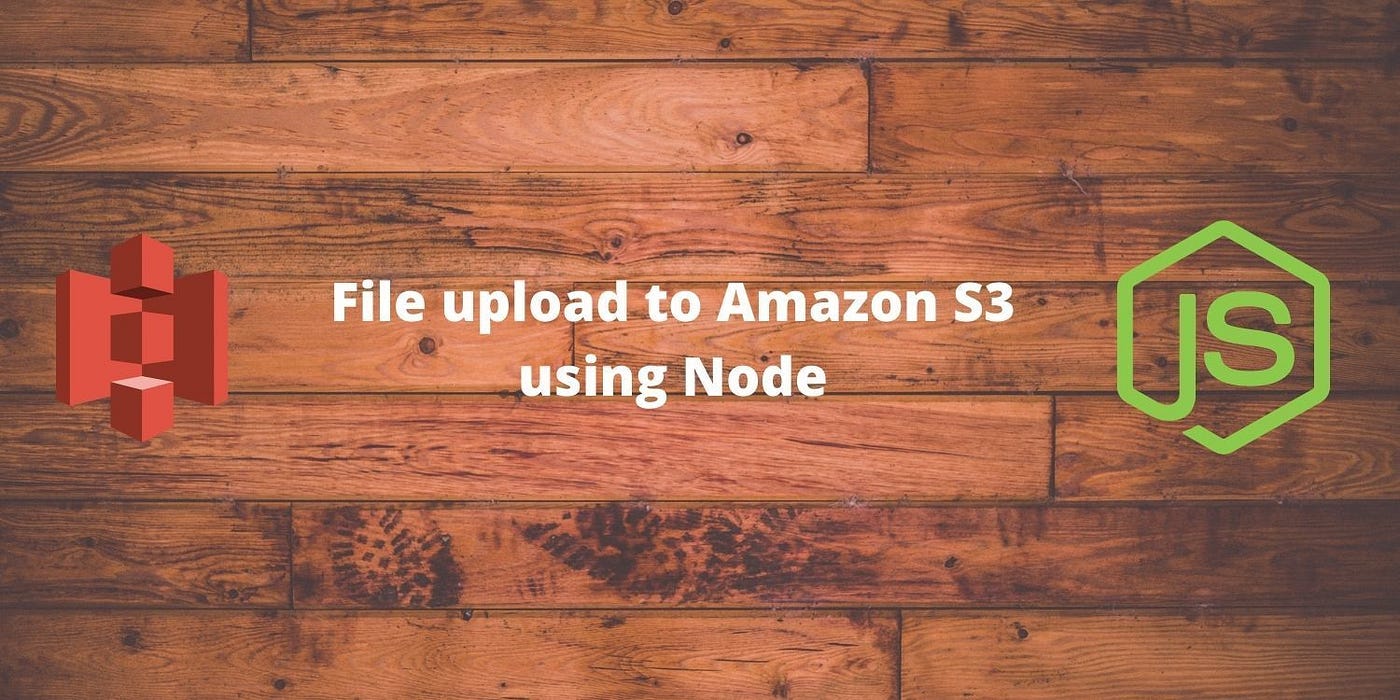
In this article, we will understand how we can push files to AWS S3 using Node.js and Express.
Pre-requisites:
- An AWS business relationship.
- Basic Limited setup which will upload files in the backend using Multer. If you want to larn about basic file upload in Node.js, you can read this.
This article volition exist divided into two parts:
1. Creating AWS S3 Bucket and giving it proper permissions.
ii. Using JavaScript to upload and read files from AWS S3.
ane. Creating AWS S3 Bucket and giving it proper permissions
a. Creating the S3 saucepan
→ Log in to the AWS console and search for S3 service

→ Create a saucepan. Click Create bucket.
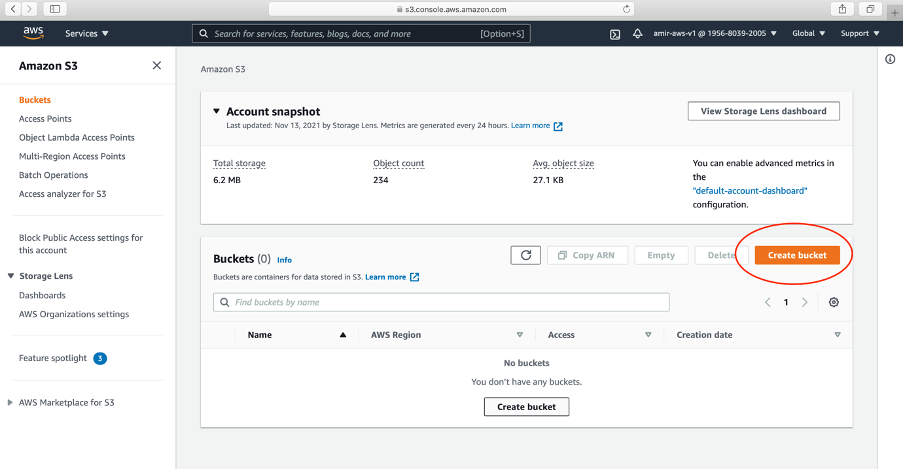
→ Write your bucket name and AWS region. Click Create saucepan button
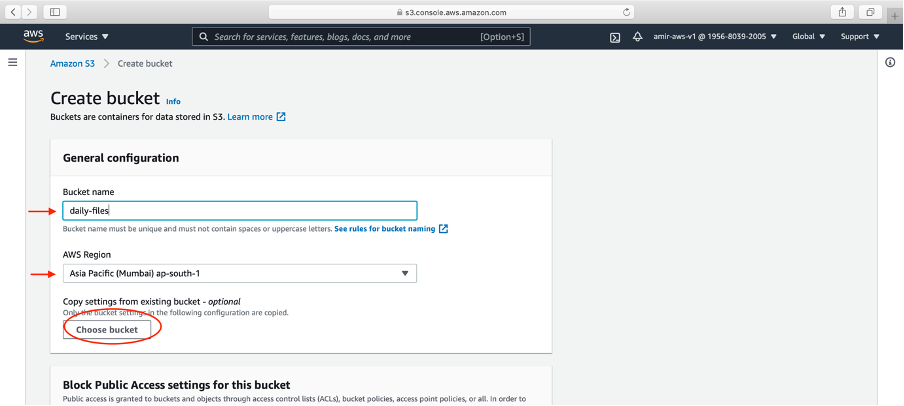

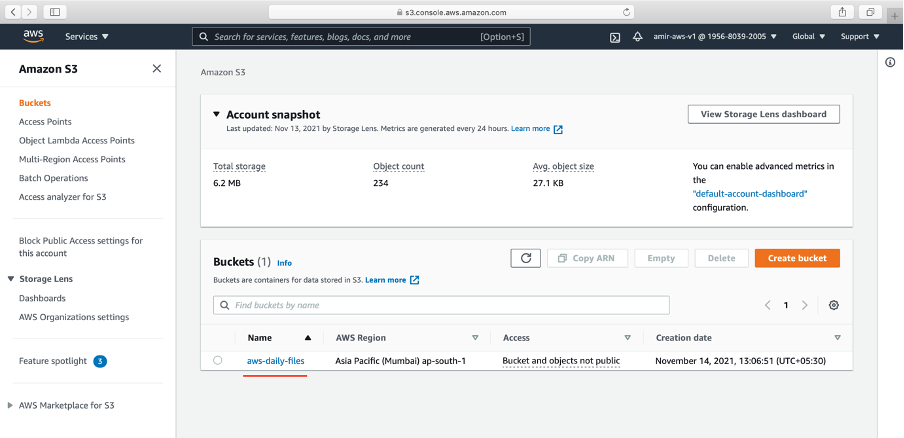
→ The bucket is successfully created. We will upload file to this bucket using Node.js
→ In your Node.js application, we will demand saucepan name and regions.
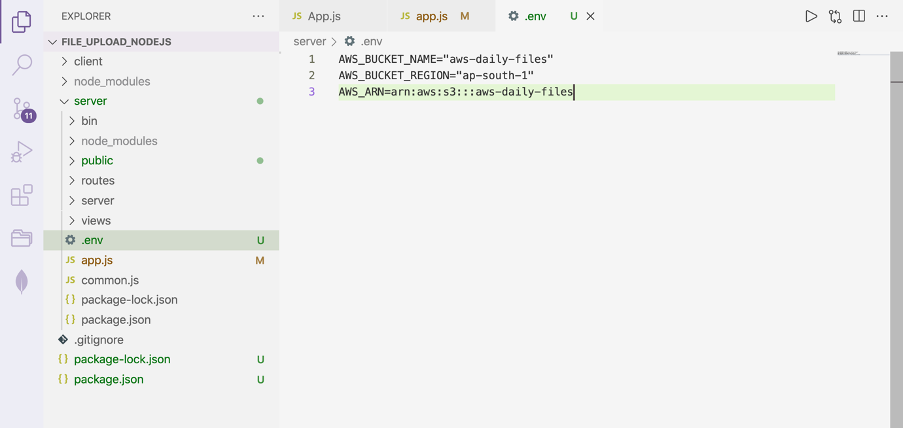
→ As we are the creator of this S3 saucepan, I can read, write, delete and update from the AWS console. If we want to practice it from the Limited server. Nosotros need to give some permissions using IAM policies.
b. Creating IAM Policy:
→ Go to the IAM service in AWS

→ Click Policies

→ Click Create Policy button
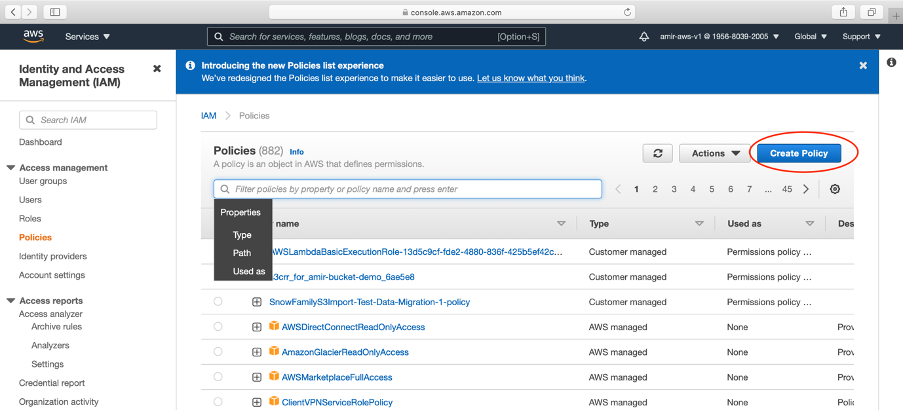
→ We will now create our policy. This is specific to our newly created bucket.
→ Click Chose a Service and select S3
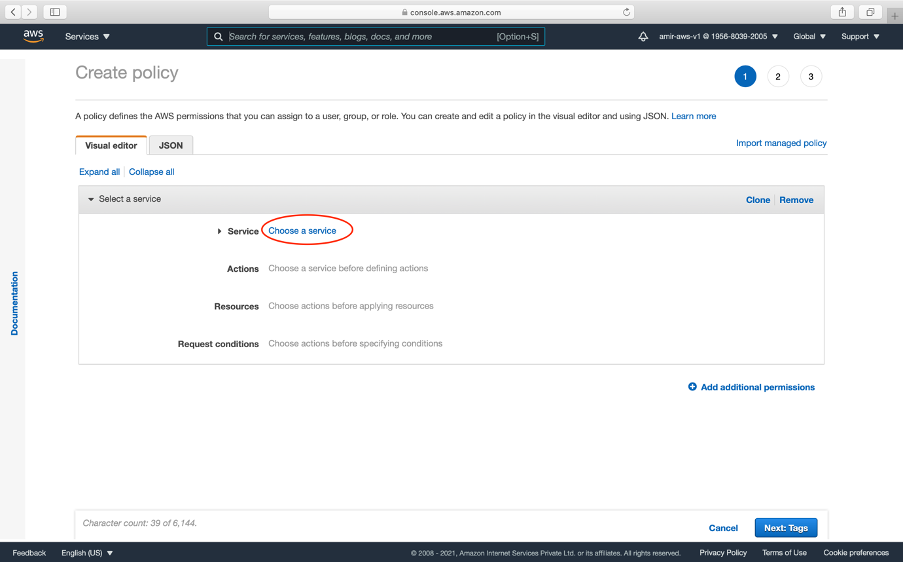
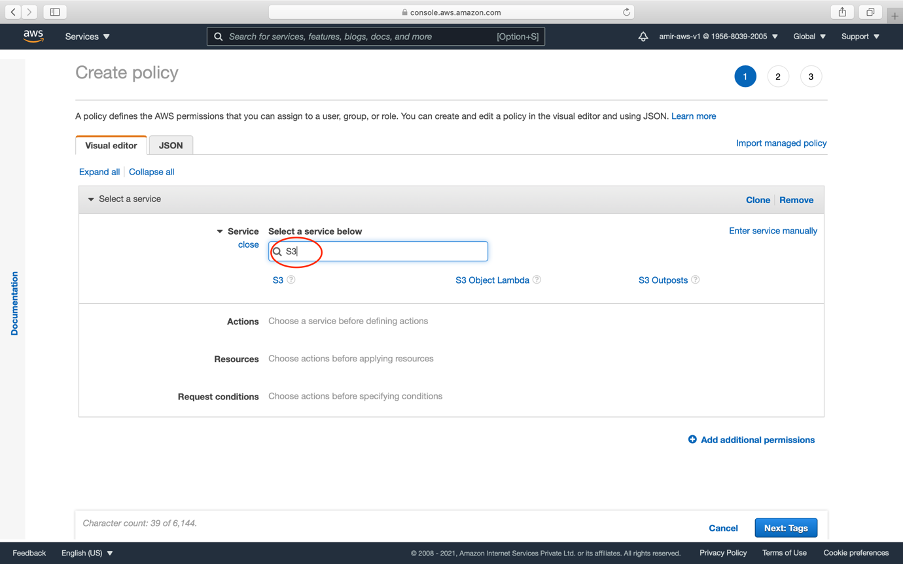
→ There are many S3 permissions we can give to the saucepan. For uploading and reading beneath permissions will be sufficient
getObject — reading from S3
putObject — writing to S3
deleteObject — delete from S3
→ Click Write and select putObject and deleteObject
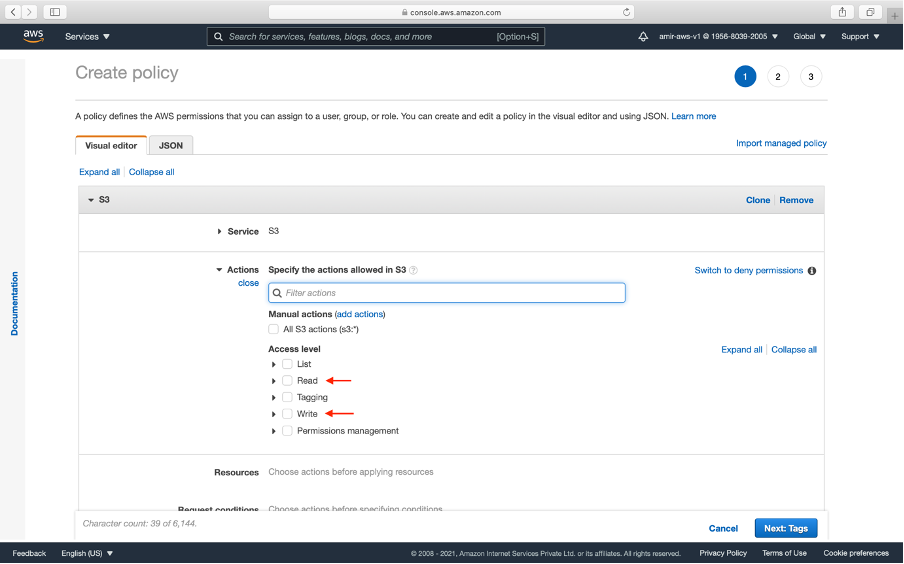
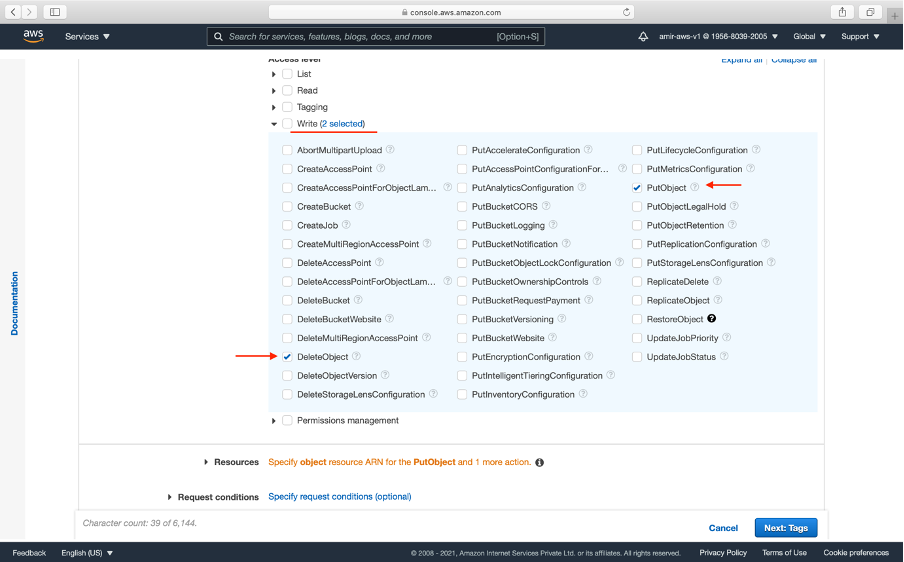
→ Click Read and select getObject
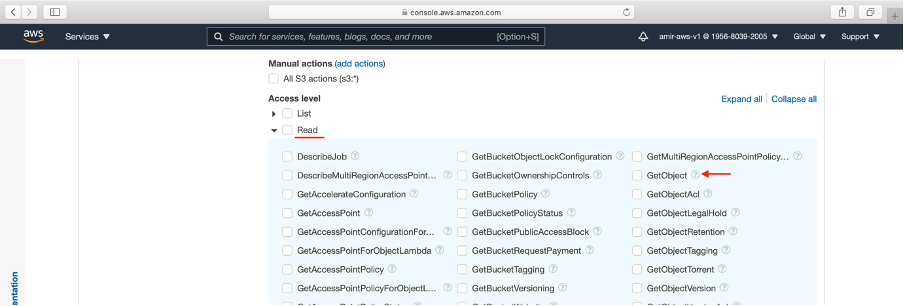
→ The next pace is to add ARN. ARN means you saucepan identity
arn:aws::s3:::<your_bucket_name> // ARN SYNTAX eg. arn:was::s3::::aws-daily-sales
→ We are choosing a specific ARN because the rules will be applied to a specific S3 bucket.
→ Click add arn

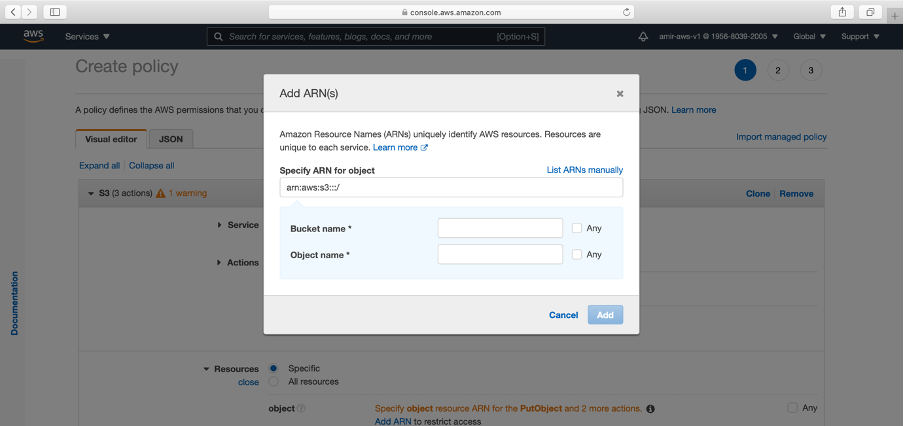
→ Paste your bucket proper noun and tick Any for Object name.

→ We now hot a couple of next buttons
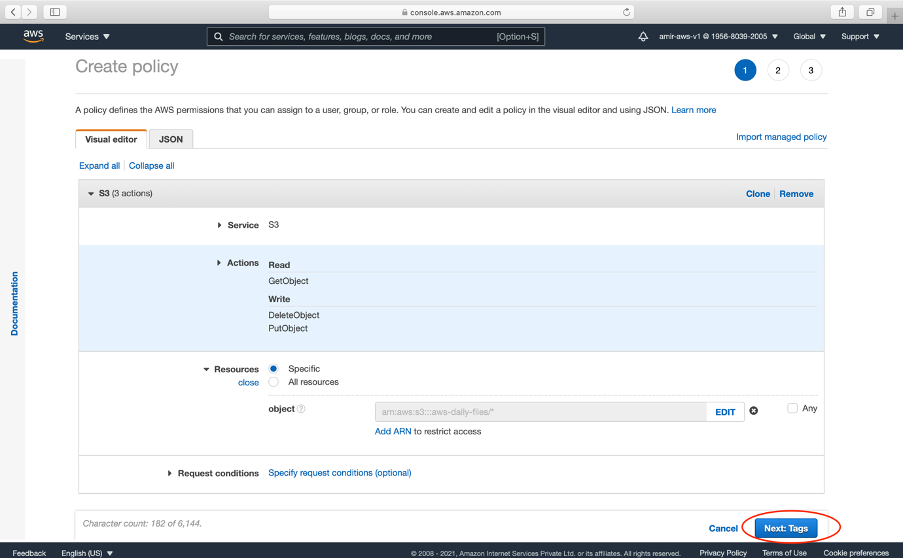
→ Click Create policy
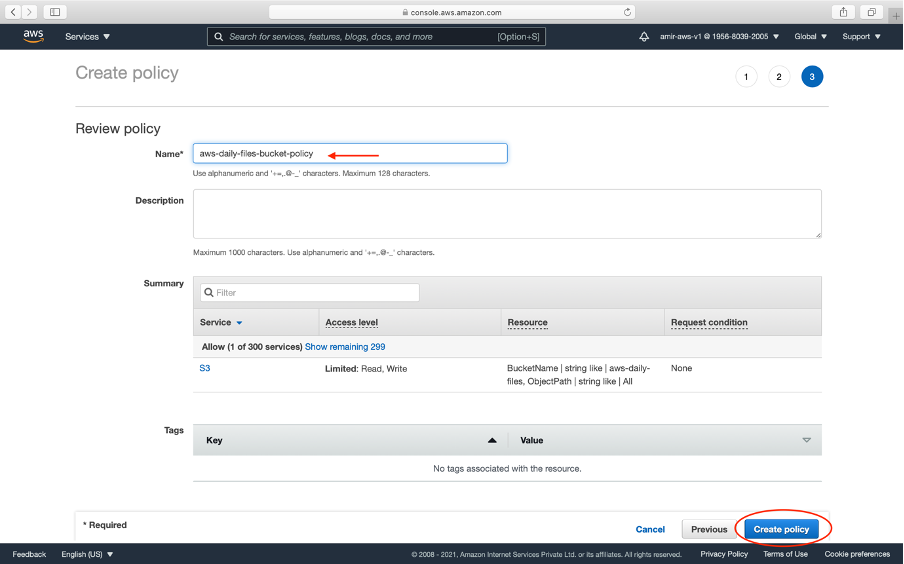
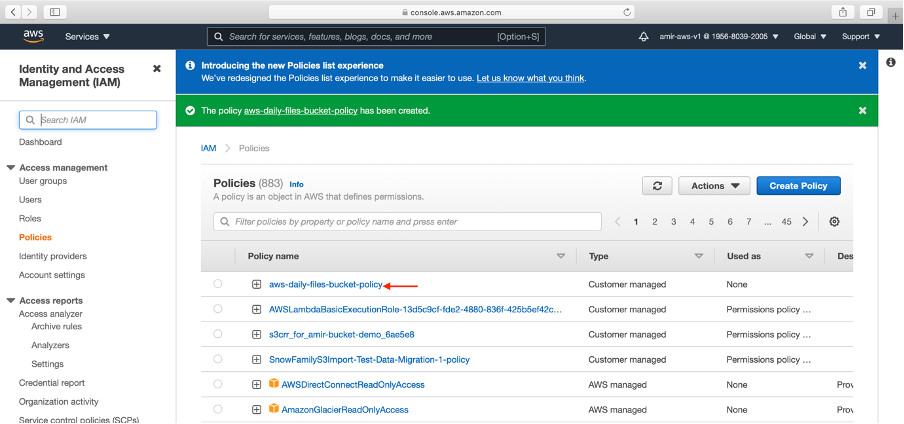
→ We now run into our policy created. It has read, write and delete admission.
c. Create a IAM User:
→ This can exist a physical user or a lawmaking which will access the S3 bucket.
→ Click Users from left explorer in IAM
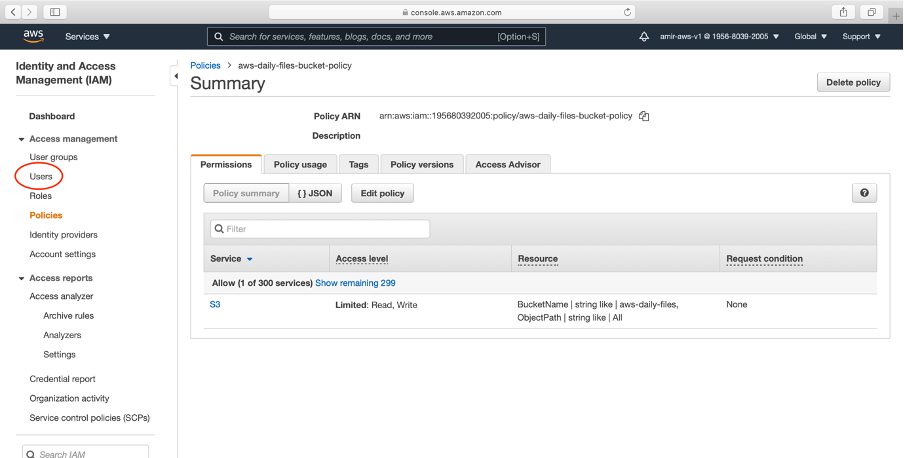
→ Click Add users
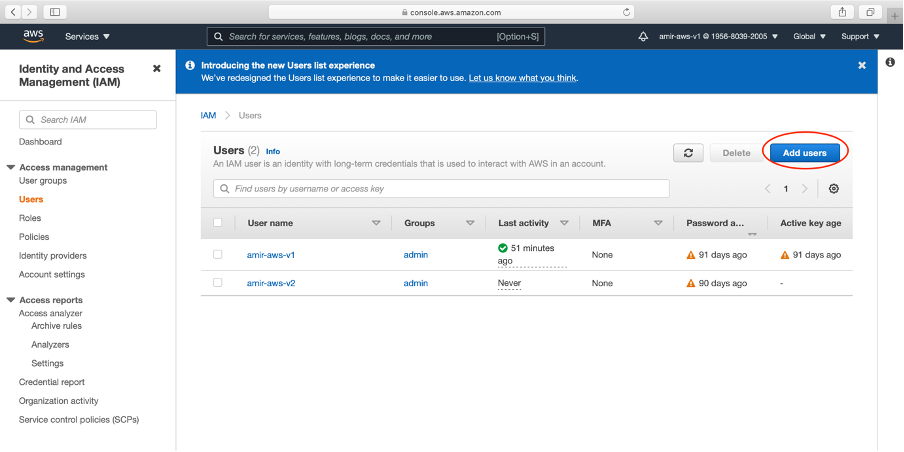
→ Write the name of the user. Equally our Express app will access the S3.
Giving programmatic access means a code/server is the user which will access information technology. For our example Node.js app
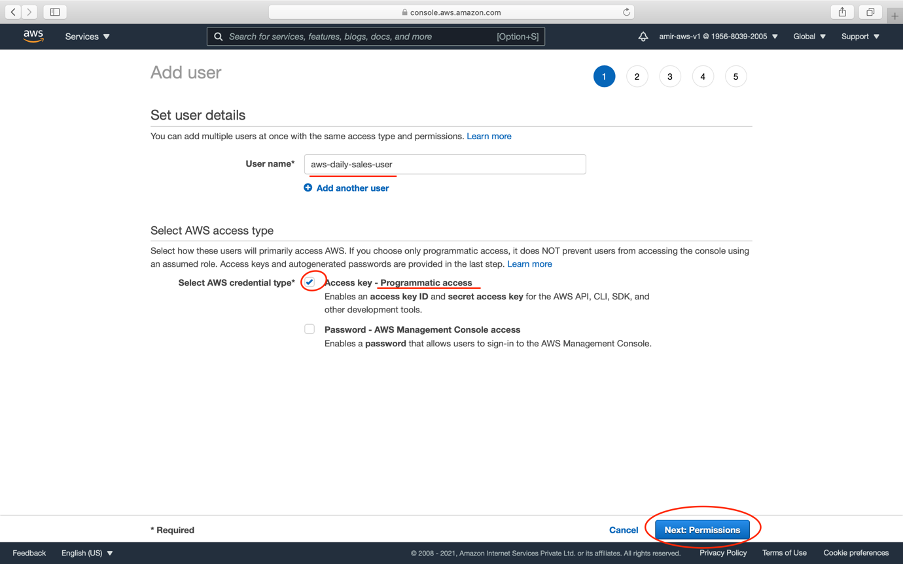
→ In the end, we will get Access Key Id and Hugger-mugger primal to use in the JavaScript app equally shown below:
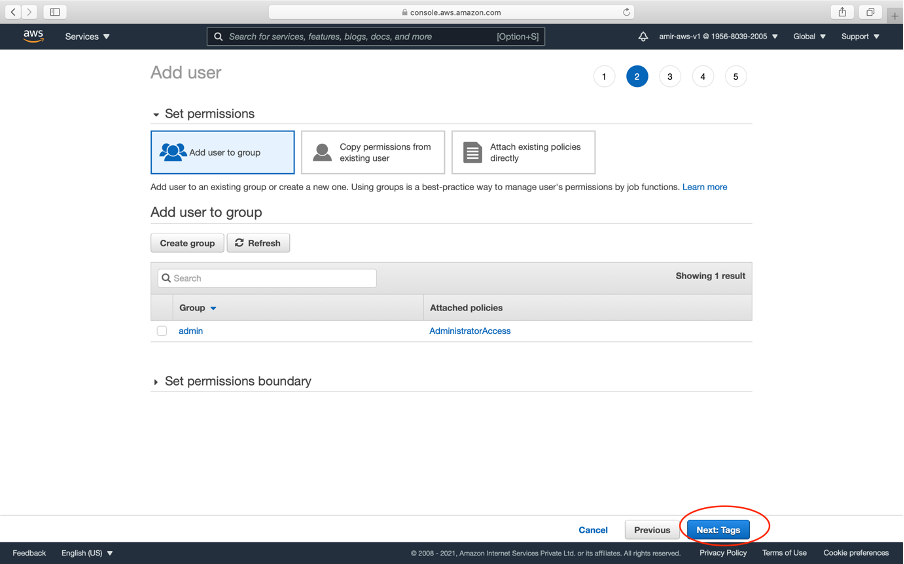
→ In the third tab, we attach our IAM policy created in a higher place. We at present click a couple of adjacent buttons
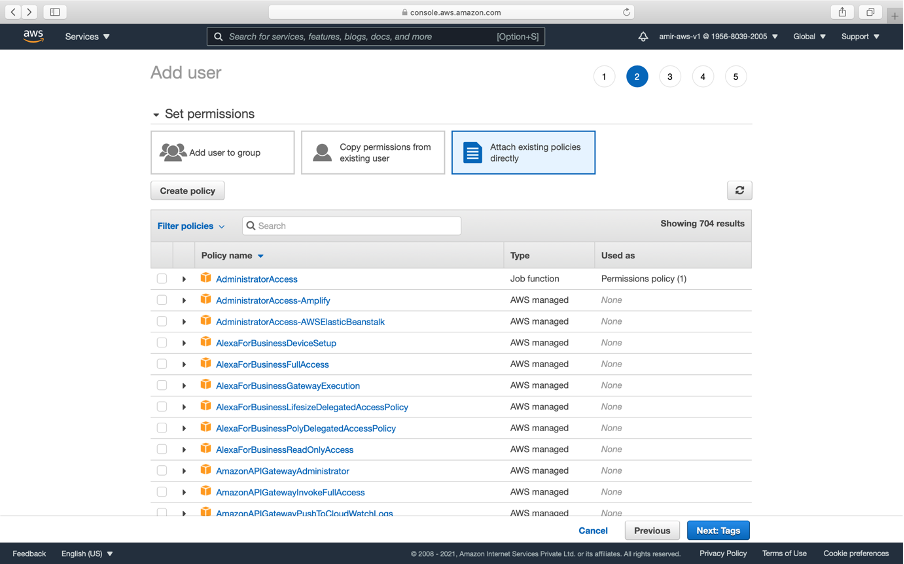
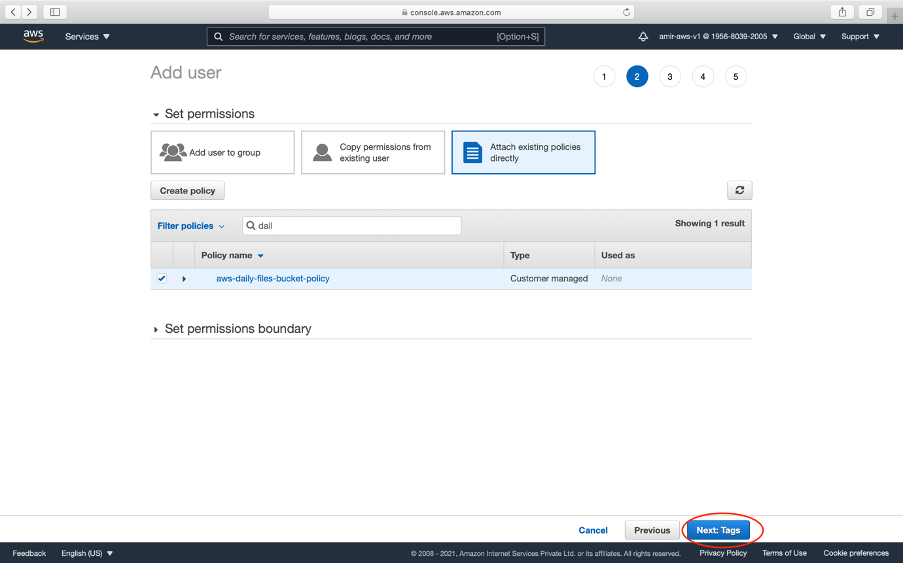
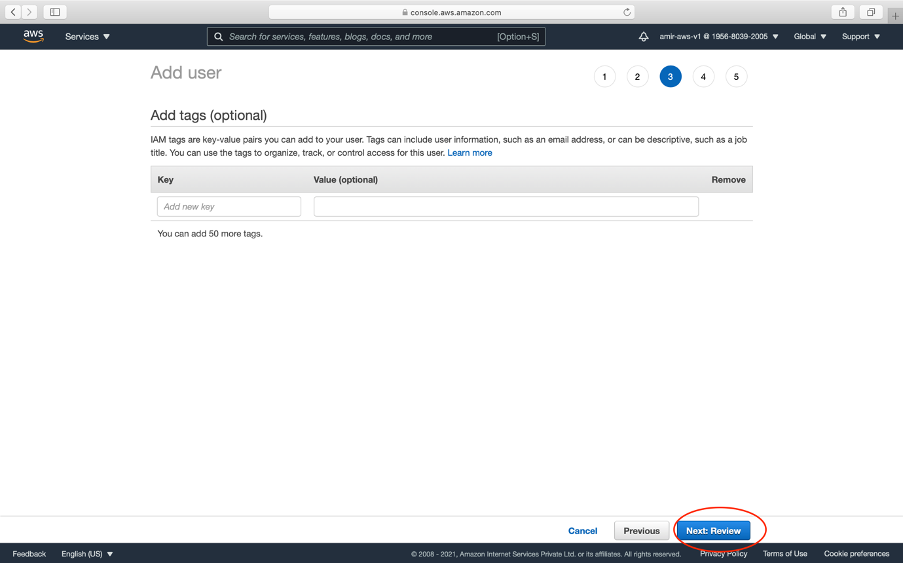
→ Click Create User button

→ We get Access Cardinal Id and Clandestine key (Never share your secret key with anyone for security reasons)
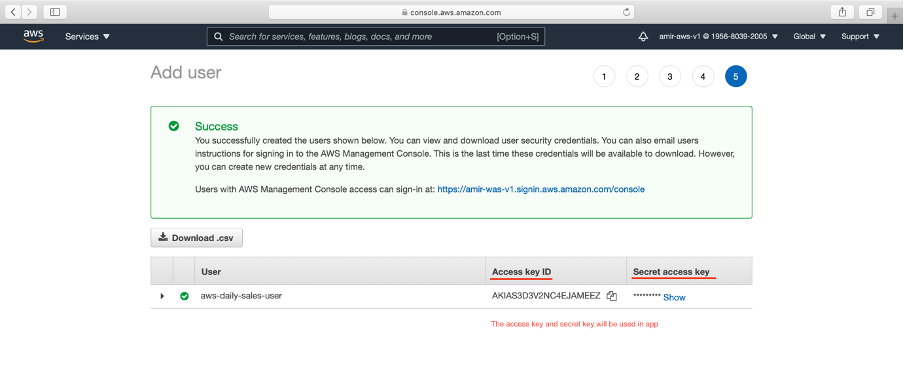
→ Paste in your .env file of the application
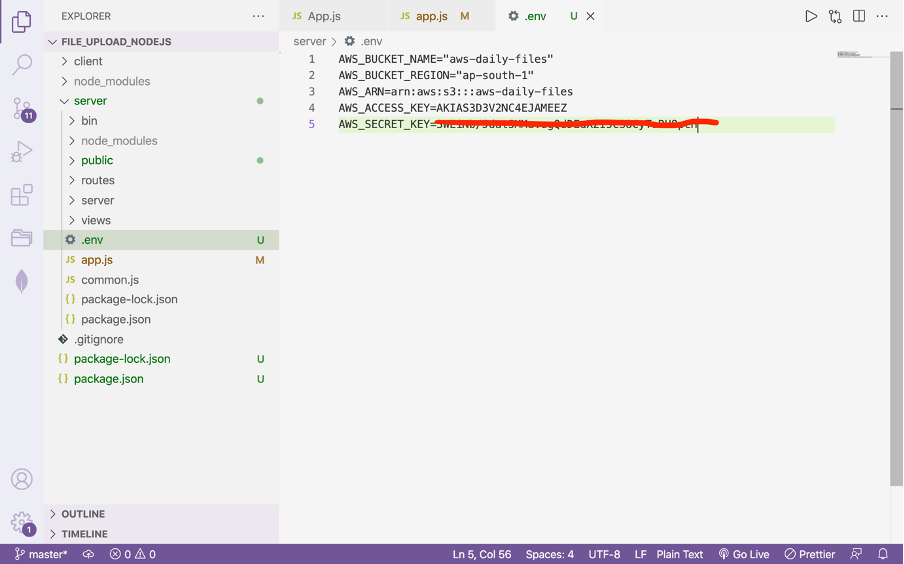
→ The next step is to write some javascript code to write and read code to S3.
2. Using JavaScript to upload and read files from AWS S3
a. Epitomize of file uploading (using Multer):
→ Express has two POST routes — single and multiple to upload single and multiple images respectively using Multer.
→ image is saved in server/public/images.
→ A client app that calls the two route utilizing frontend
For the complete article, please read it here.
b. Integrating AWS with Express
→ Create .env file and paste your AWS credentials
AWS_BUCKET_NAME="aws-daily-files"
AWS_BUCKET_REGION="ap-south-1"
AWS_ARN=arn:aws:s3:::aws-daily-files
AWS_ACCESS_KEY=AKIAS3D3V2NC4EJAMEEZ
AWS_SECRET_KEY=3WE************************pcH → Install AWS SDK using the below command
npm install aws-sdk dotenv → Create s3.js file in your application
c. Writing to S3:
require("dotenv").config(); const S3 = require("aws-sdk/clients/s3"); const fs = require("fs"); const bucketName = process.env.AWS_BUCKET_NAME; const region = procedure.env.AWS_BUCKET_REGION; const accessKeyId = procedure.env.AWS_ACCESS_KEY; const secretAccessKey = process.env.AWS_SECRET_KEY; const s3 = new S3({ region, accessKeyId, secretAccessKey, });
// UPLOAD FILE TO S3 office uploadFile(file) { const fileStream = fs.createReadStream(file.path); const uploadParams = { Saucepan: bucketName, Body: fileStream, Central: file.filename, }; return s3.upload(uploadParams).promise(); // this will upload file to S3 } module.exports = { uploadFile };
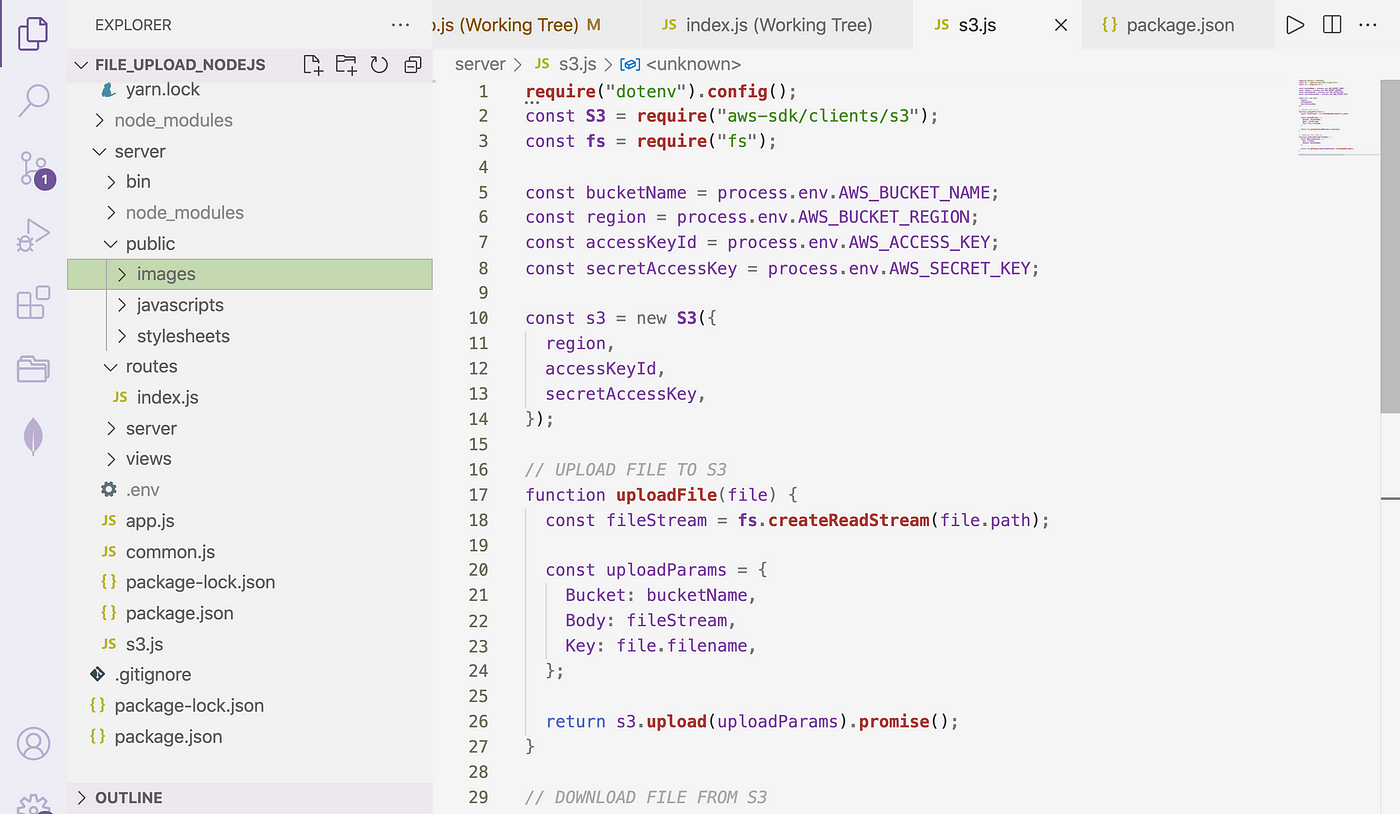
→ Now go to your routes file
server/router/index.js
var express = require("express"); var router = express.Router(); const upload = require("../common"); const { uploadFile } = crave("../s3"); const fs = crave("fs"); const util = crave("util"); const unlinkFile = util.promisify(fs.unlink);
router.postal service("/single", upload.single("epitome"), async (req, res) => { console.log(req.file); // uploading to AWS S3 const outcome = look uploadFile(req.file); // Calling above function in s3.js console.log("S3 response", result); // You may apply filter, resize image before sending to client // Deleting from local if uploaded in S3 bucket expect unlinkFile(req.file.path); res.send({ status: "success", message: "File uploaded successfully", data: req.file, }); }); module.exports = router;
→ We have created a basic frontend that sends information to Limited as POST multipart data
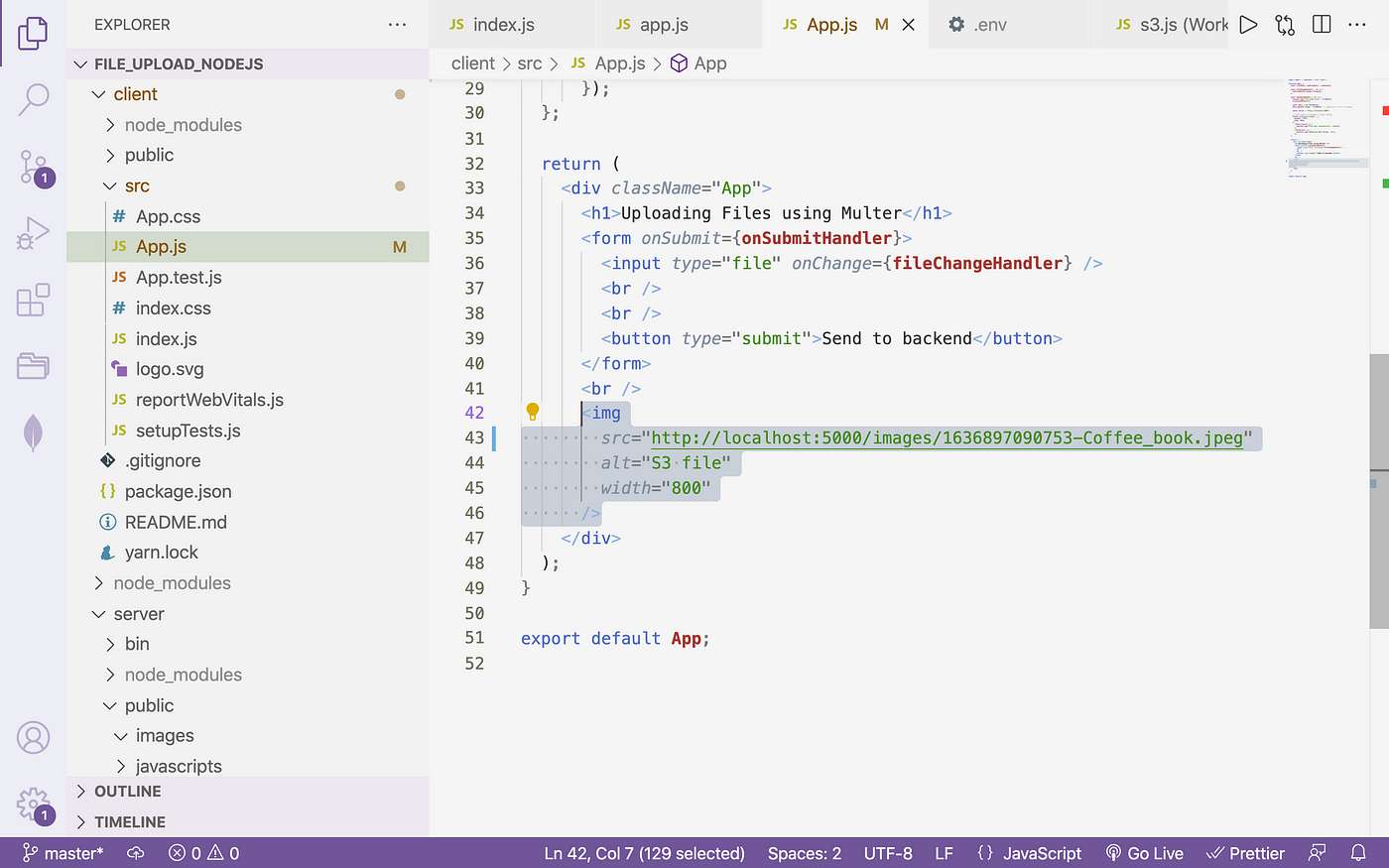

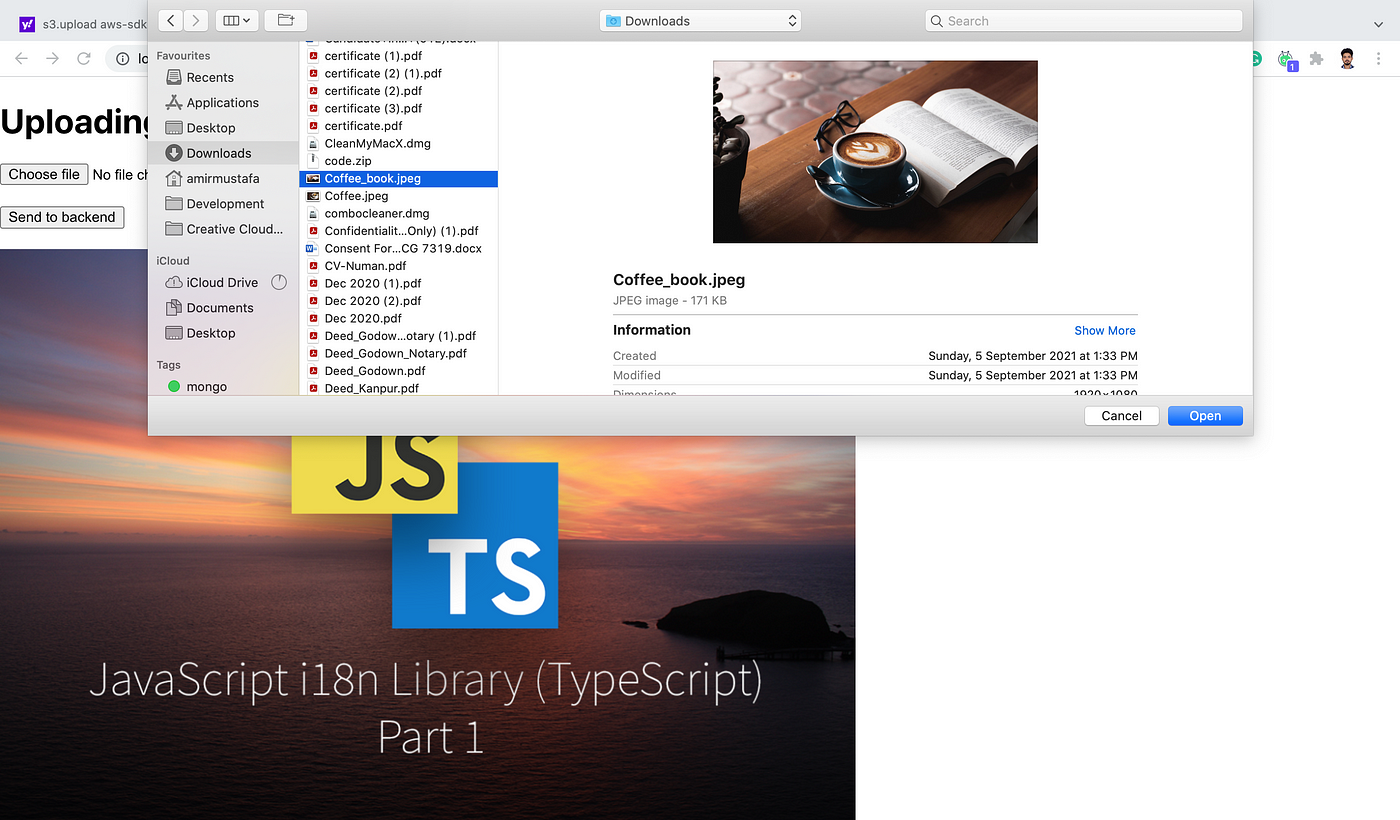
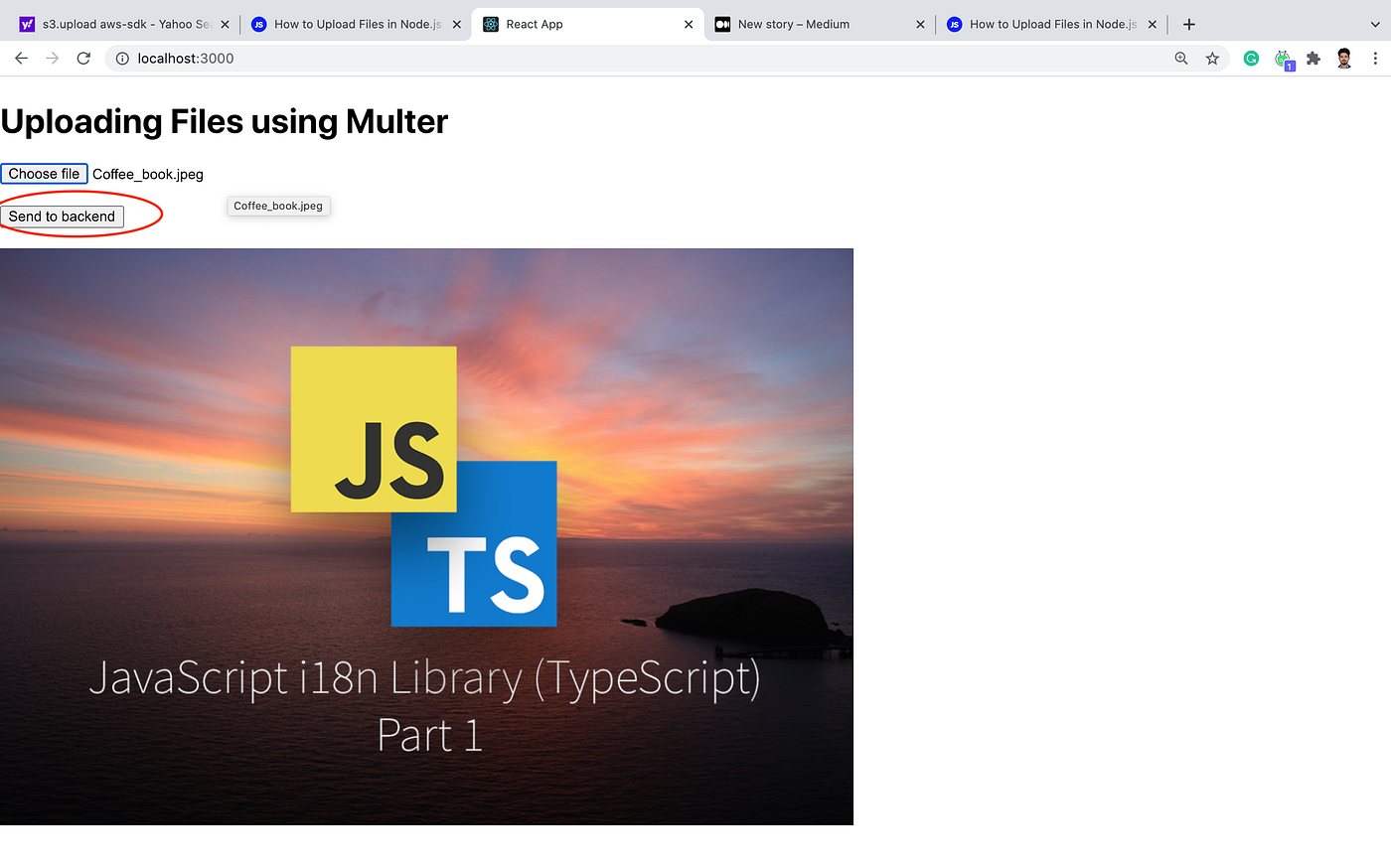
→ Reading data from S3 and press in the customer will exercise below. For now we volition see information will be uploaded and is also therein S3 bucket in AWS console.
AWS console before uploading
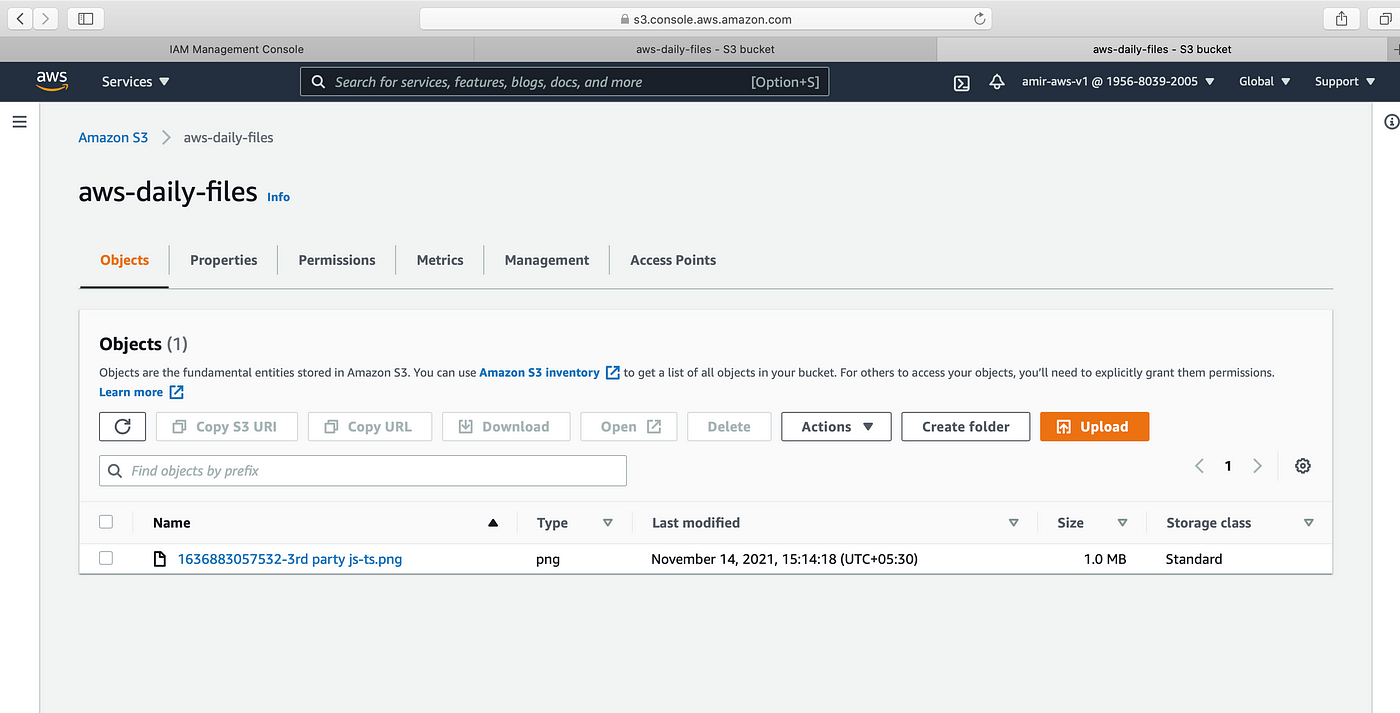
→ Click Transport to backend push button
→ In the Node.js server terminal, nosotros see a response printed from S3. Hither the key is the file proper name and the path is the location to file.


→ Permit usa bank check the S3. We see a new file is uploaded in S3
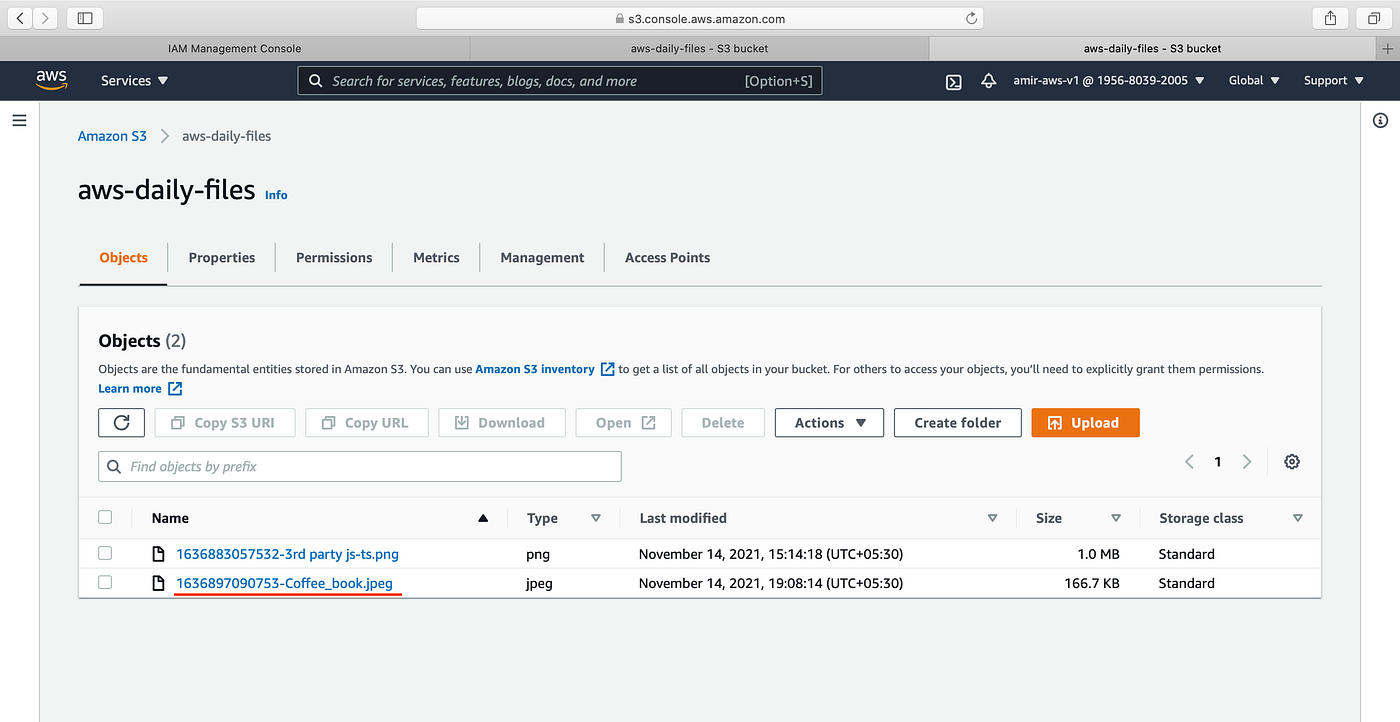
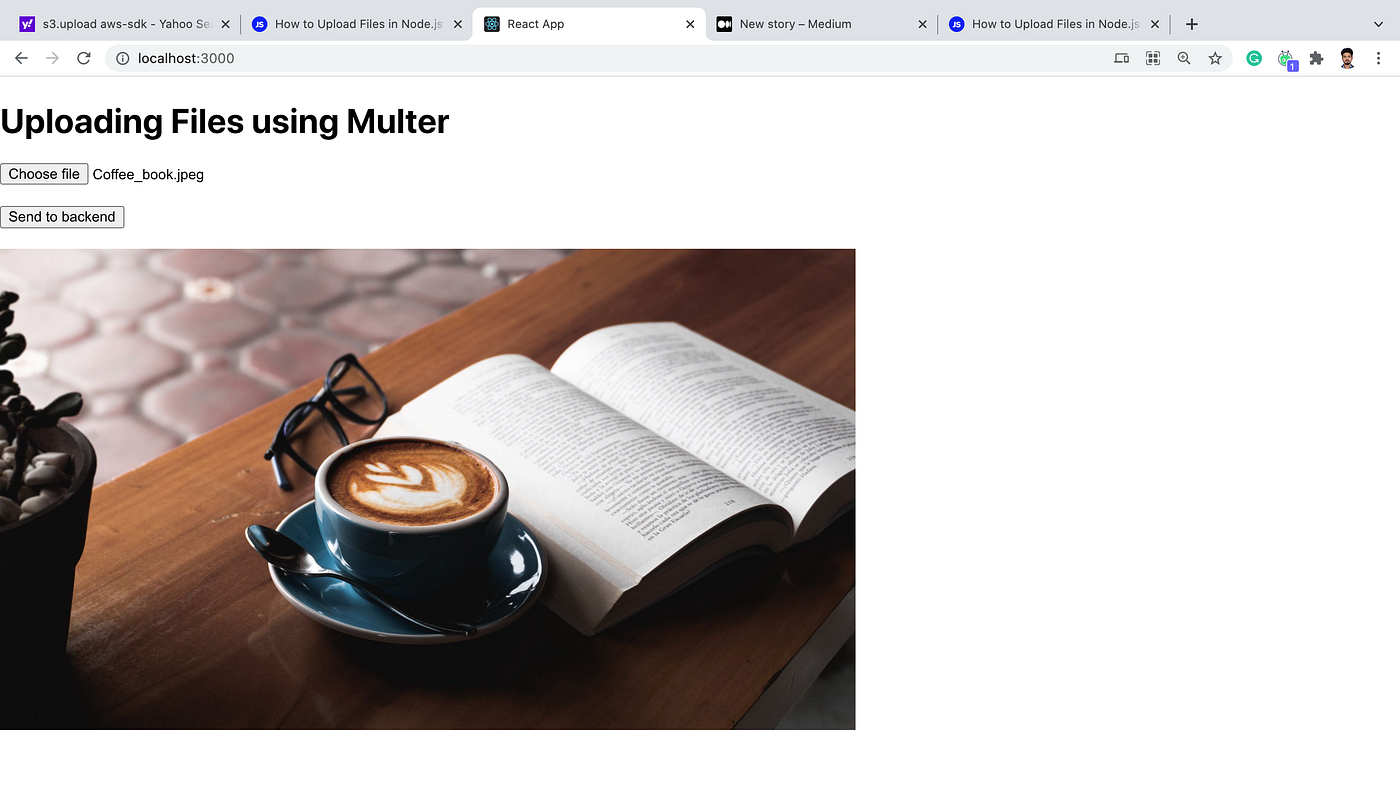
d. Reading file from S3:
→ Nosotros see from the above image new prototype is reflecting client-side from S3. Let u.s.a. write the code for it.
server/s3.js
crave("dotenv").config(); const S3 = require("aws-sdk/clients/s3"); const fs = require("fs"); const bucketName = procedure.env.AWS_BUCKET_NAME; const region = process.env.AWS_BUCKET_REGION; const accessKeyId = process.env.AWS_ACCESS_KEY; const secretAccessKey = process.env.AWS_SECRET_KEY; const s3 = new S3({
region,
accessKeyId,
secretAccessKey,
}); // DOWNLOAD FILE FROM S3 part getFileStream(fileKey) { const downloadParams = { Key: fileKey, Bucket: bucketName, }; return s3.getObject(downloadParams).createReadStream(); } module.exports = { uploadFile, getFileStream };
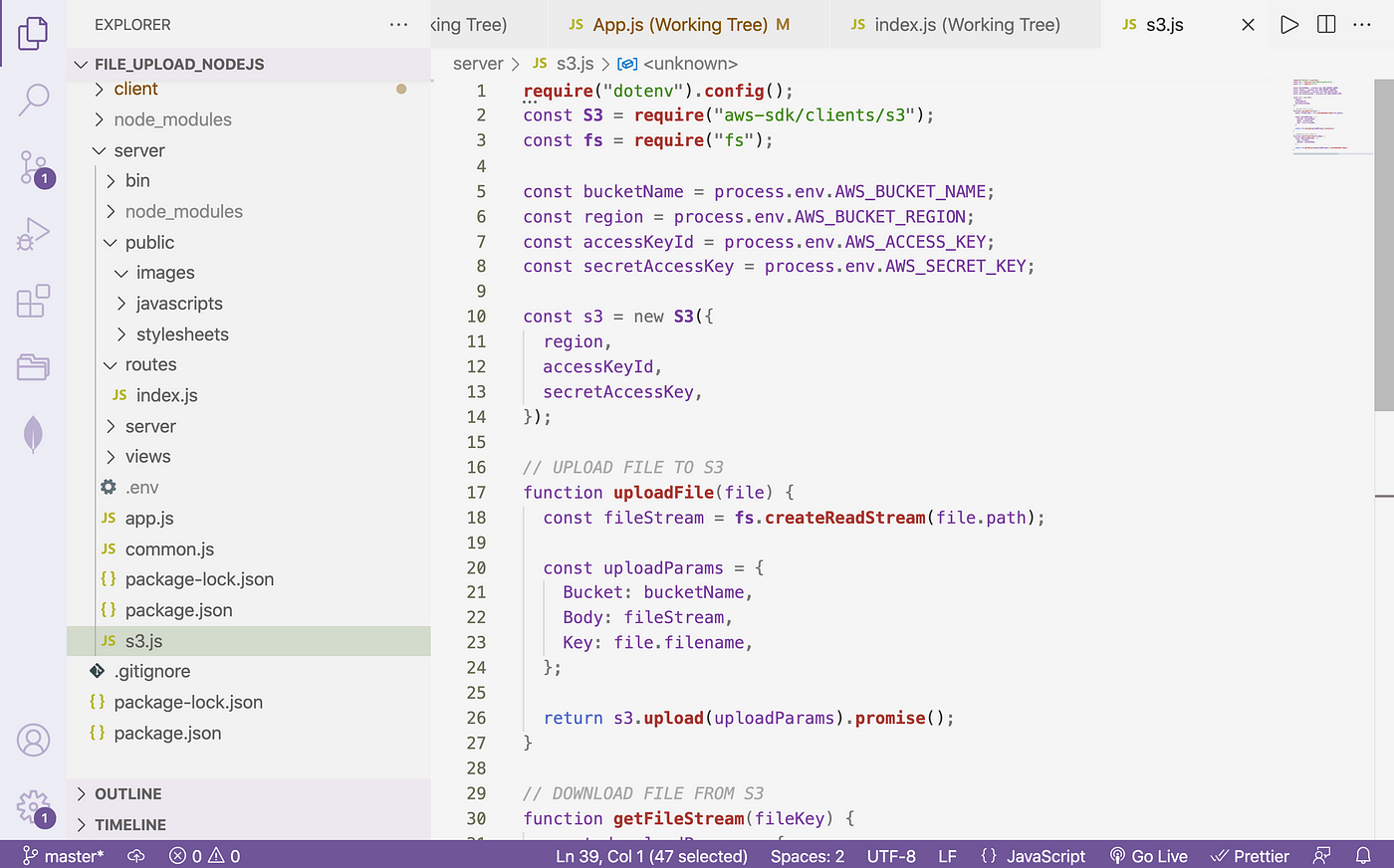
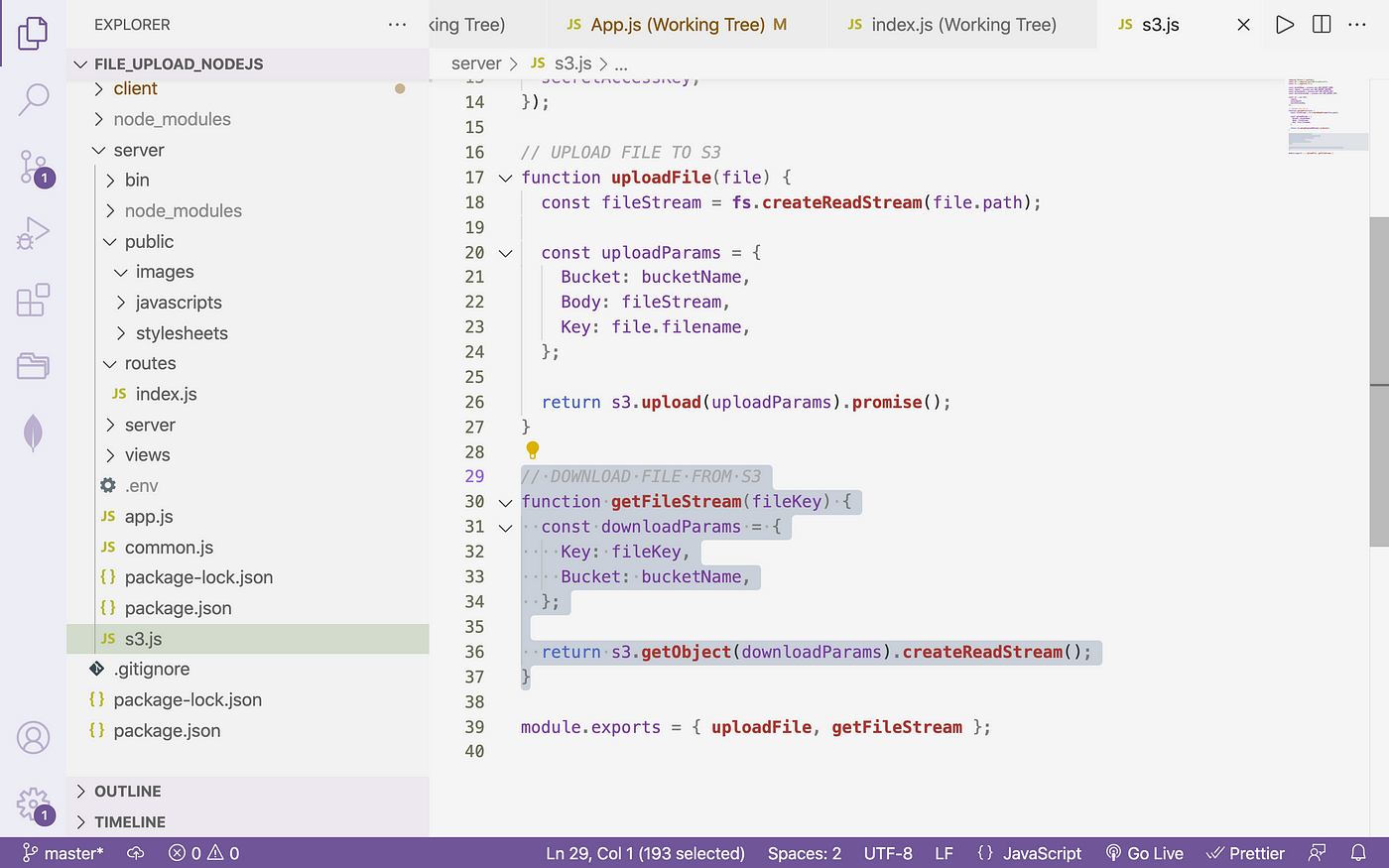
→ Utilise this role routes
server/routes/index.js
var express = crave("express"); var router = express.Router(); const upload = require("../common"); const { uploadFile, getFileStream } = crave("../s3"); const fs = require("fs"); const util = crave("util"); const unlinkFile = util.promisify(fs.unlink);
router.get("/images/:key", (req, res) => { const primal = req.params.key; panel.log(req.params.key); const readStream = getFileStream(key); readStream.pipe(res); // this line will make image readable }); // eg <serverurl>/images/1636897090753-Coffee_book.jpeg // to be used in customer
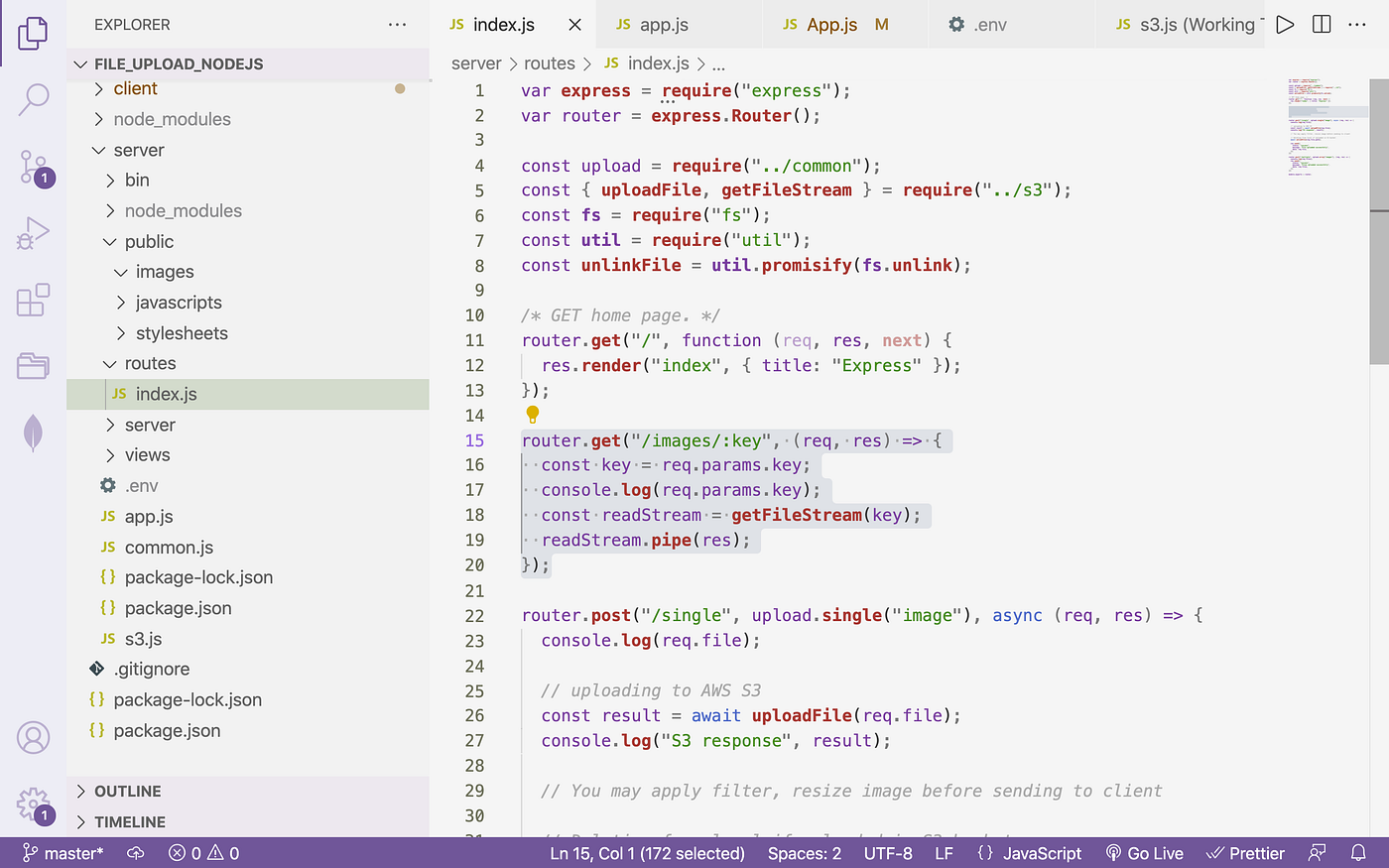

→ In the frontend, nosotros will employ the S3 response key and utilise information technology in the customer

Video:
https://secure.vidyard.com/organizations/1904214/players/pkYErcDdJVXuoBrcn8Tcgs?edit=true&npsRecordControl=1
Repository:
https://github.com/AmirMustafa/upload_file_nodejs
Closing Thoughts:
We have learnt how to upload and read files from the AWS S3 saucepan.
Thank yous for reading till the cease 🙌 . If y'all enjoyed this article or learned something new, support me by clicking the share button below to reach more than people and/or give me a follow on Twitter to encounter another tips, manufactures, and things I larn about and share in that location.
More content at plainenglish.io
williamsharge1942.blogspot.com
Source: https://javascript.plainenglish.io/file-upload-to-amazon-s3-using-node-js-42757c6a39e9
0 Response to "Upload Files to Amazon S3 Using Javascript"
Post a Comment